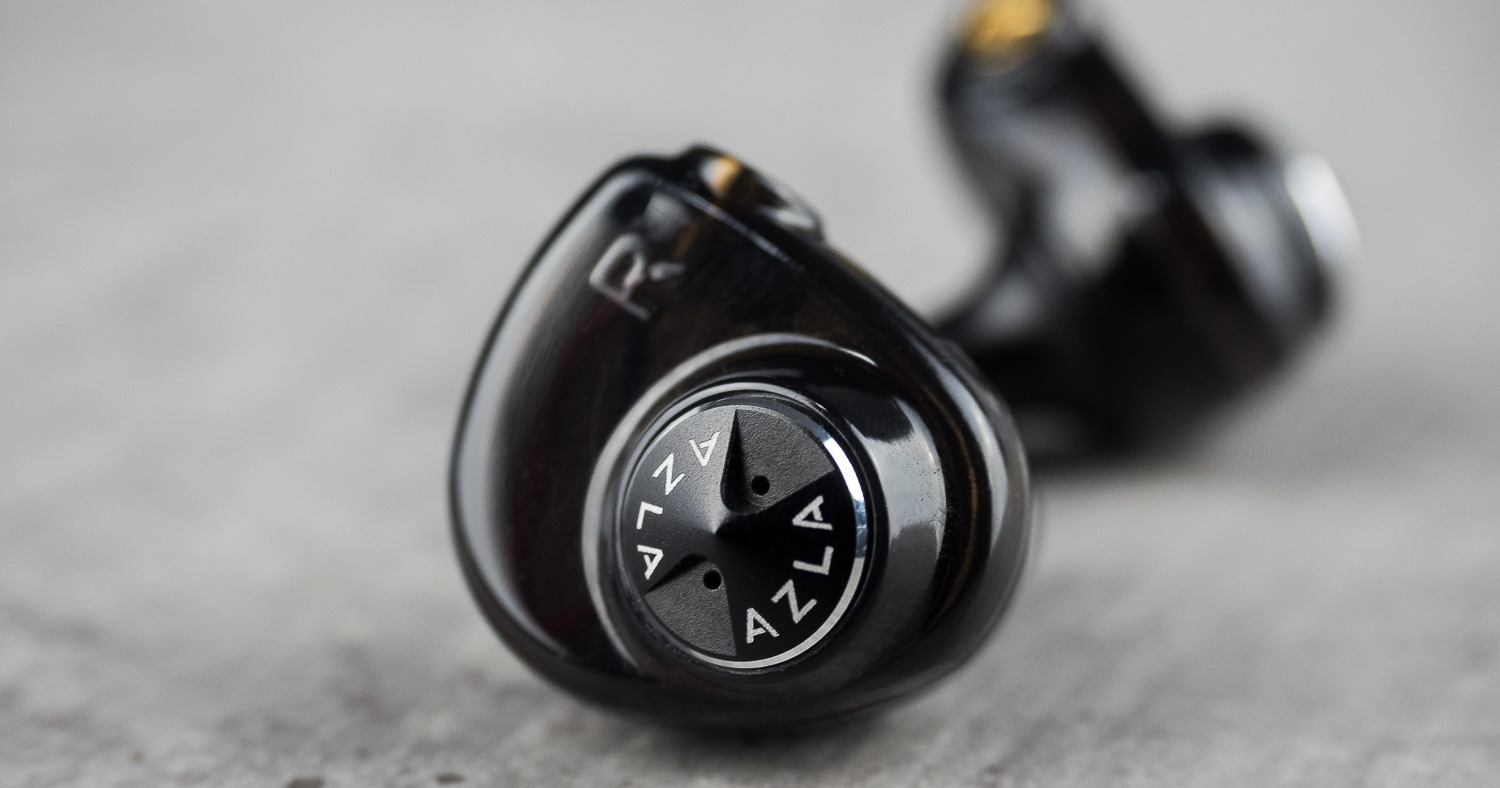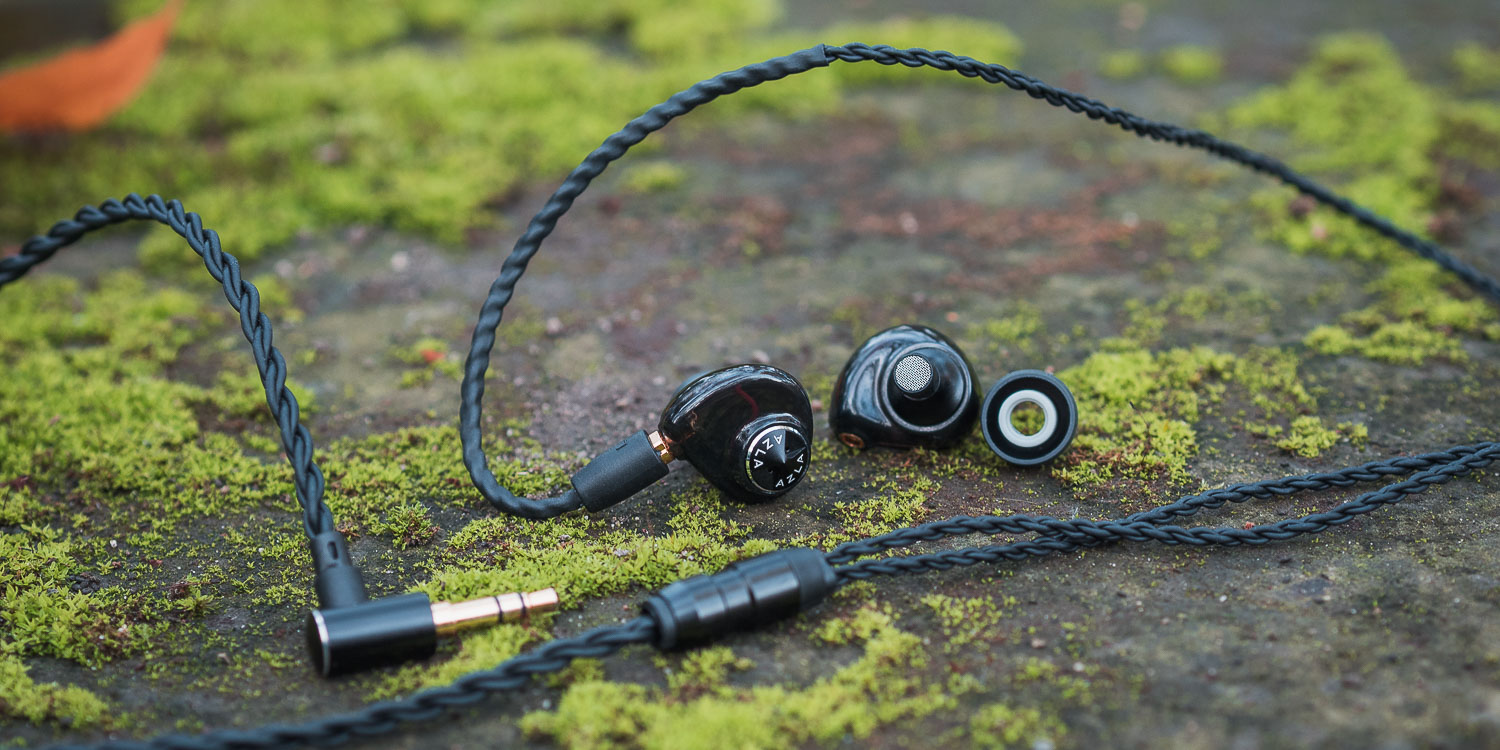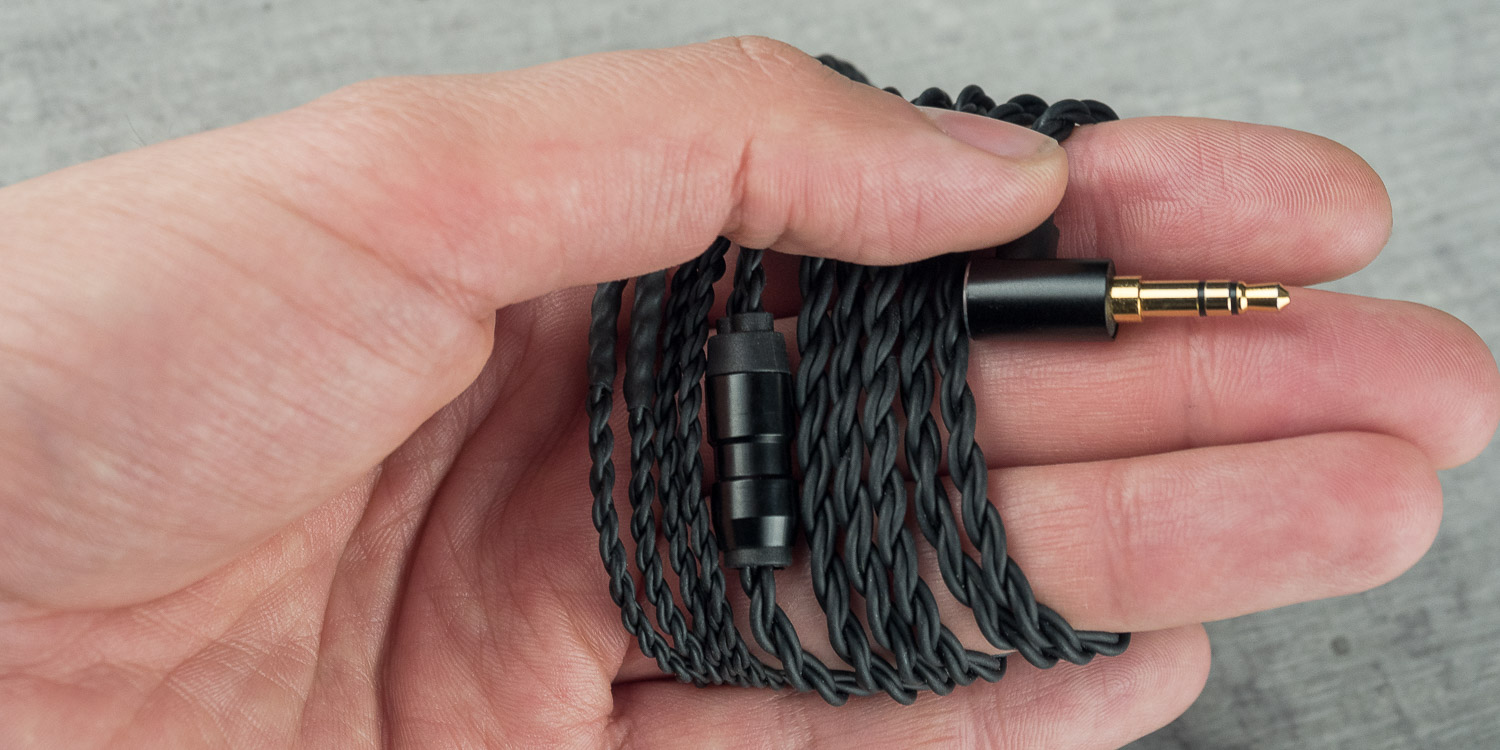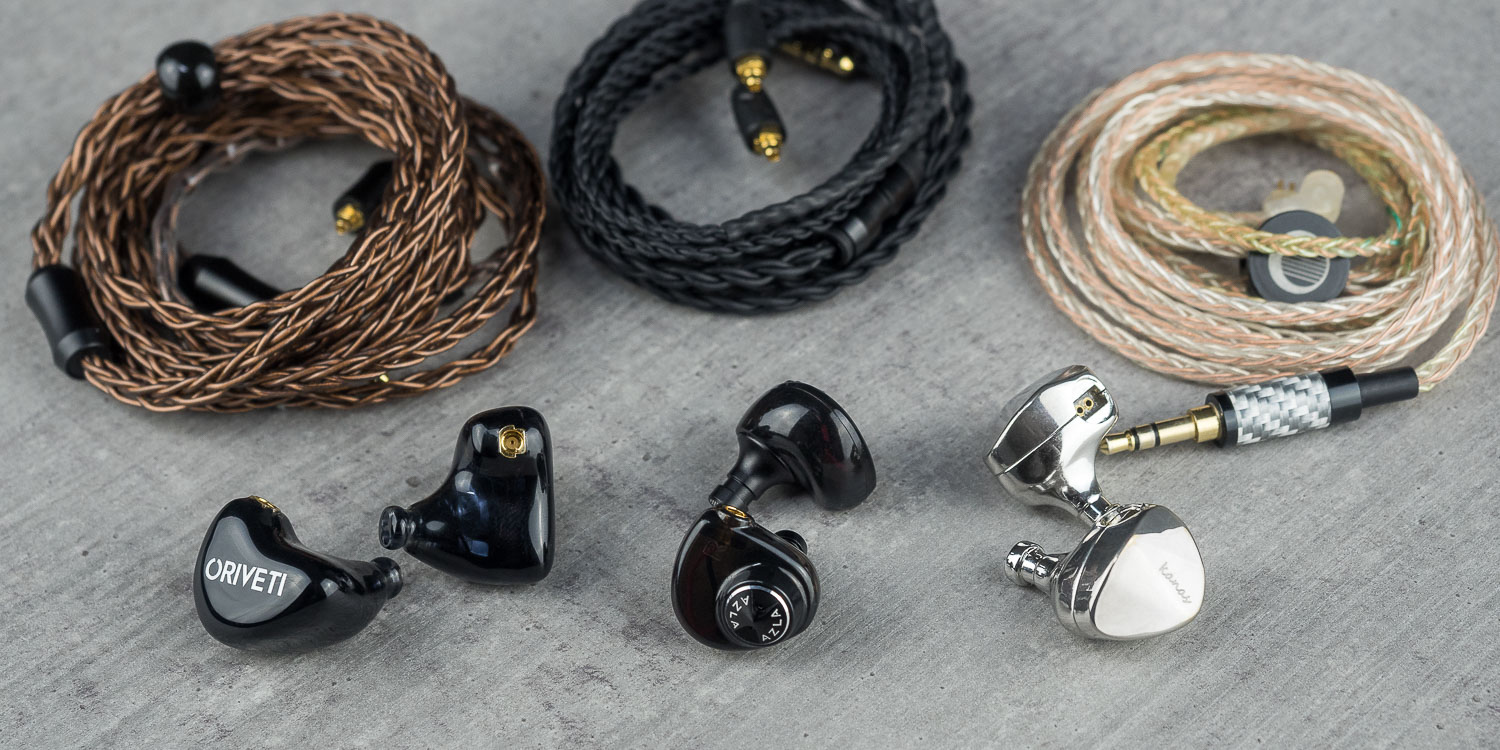
May I present you my flavor of the month for October/ November? The rare to find AZLA Horizon secured the spot this time around and is making sure that the fabulous Oriveti OH500 get a little less playtime. I picked them up as a souvenir at e-earphone in Akihabara, Tokyo. I have not found a Western retailer but the Asian MSRP is equivalent to around 250 – 300 USD/EUR/GBP.
The Horizon are an ambitious IEM, equipped with a single-dynamic driver and a decent feature set. The Korean company makes a big deal about their Infinity driver and it definitely managed to impress me. If you want to know more about the technology used, click the link below for the official product page.
Quick Navigation
Hardware

Packaging
The packaging is very minimal. It is kept in black and uses almost only carton. I really appreciate this eco-friendly approach which I find suitable for anything short of luxurious items. When unboxing, the IEMs are nicely presented and the accessories are hidden in different layers underneath. There is nothing else to it.
Accessories
No protection case
For some reason, the package is missing a transportation case. AZLA does not even provide a pouch, so best be prepared with a backup when buying this item. I am not sure if I want to see this become a trend, because I think it is very important to store your IEM safely. It might be that AZLA has an increase in warranty claims because of this. Personally, I have added the Audio-Technica HP300 IEM case to my cart. It suits the Horizon very well.
Sedna Ear Tips
While I am upset about the lack of a case, I am a huge fan of the included ear tips. The so-called Sedna Ear Tips, which are also being sold separately, caught my attention even before I knew about the Azla Horizon IEM. The tips are basically an evolution of the SpinFit design with a rougher texture and a wider bore. I really like to use these tips on other earphones, too. But it is absolutely remarkable how well these snap on to the nozzle of the Horizon earphones. It is such a joy to install them. Of course there is also a bunch of more average tips included, but they don’t even deserve to be unpacked next to the genius Sedna.
Build Quality & Comfort
The build quality is absolutely fine. AZLA uses a slightly transparent black plastic shell that allows a peek inside onto the driver’s housing and some wires. It is reminiscent of the Oriveti OH300 shell, though that one looks more seamless and of higher quality due to the resin. The center piece with the air flow vents is of metal. Overall, I find the build to be very good, with durable connections, and flush grill and an ergonomic and comfortable design.
Cable

The removable cable is all black and of above average quality. It is very flexible and straightens out nicely. I also like the braiding of the four rubbery wires which have a decent diameter to create a feeling of decent durability. The cable does create some microphonics when it bumps against other objects, but this can be minimized to a tolerable level when the cable rests close to the ear. I am not a fan of MMCX connections as they are the least dependable from my experience. However, in this case, the connections click well into place and lock in securely.
Sound
Tonality
The tuning of the AZLA Horizon is definitely inspired by the Harman In-Ear reference target. This means that the lows are boosted but with a shifted focused on sub-bass. Fundamentals are cut to avoid warmth and bloat. This allows for great speech intelligibility and boosted details in the midrange. The treble is leveled to function as counterweight for the bass, which results in an airy presentation that supports great layering and soundstage size. All in all, the tuning is well done and creates a believable timbre.
Check out the frequency response on the measurement page, if you’re interested.
Bass
I swear I read about “planar-like bass” more than once when doing some online research about the AZLA Horizon. Honestly, I am not sure where that claim comes from. Taking the tightness and body of an Audeze LCD or MrSpeakers Aeon as reference, I can think of other IEMs that would suit the character better, for example the VE Elysium (single BA for bass) or Campfire Andromeda (dual BA). Though the AZLA can’t keep up with that level of speed, the extension is very good and the tuning suits a great scale of genres. The Horizon can create some rumble, but the very lowest notes from 20-40 Hz can’t match planar-like qualities, IMHO. Instead, the Horizon is most prominent around 60 – 100 Hz, where it perfectly adjusts to acoustic bass and electronic beats.
Midrange
The one thing Harman does right is to make vocals pop and bring them to the front row. AZLA learned well and tuned their mids accordingly. Voices sound airy, voluminous, believable and most importantly alive. The midrange really shines and this is the reason why I prefer the Horizon for my occasional YouTube consumption too. The speech intelligibility is amazing without ever sounding hot. Of course instruments benefit from this too. The reverb on jazzy piano notes can bring all the joy to one evening. It is very rare that the midrange might come off as shouty, however, this is a characteristic that cannot be avoided with a tuning like this.
Treble
The Horizon uses the upper midrange to pull great detail out of the audio. I highly recommend to play Unsquare Dance by Dave Brubeck. On this track, the claps and percussions are of incredible realism. Though the treble is rather forward overall, I never felt like it would be too hot, let alone sibilant. Instead, I want to describe the higher frequencies of the Hoizon as even and airy. The decay is tight and to the point. I have to admit that I really like the treble response of this IEM and it is very rare that I perceive it as hollow or tinny, though I cannot browse my whole music collection without avoiding the rare encounters where it sounds slightly off.
Soundstage and Resolution
The Harman curve was not developed by chance. Though I do not want to dive into this topic too much, the Azla Horizon definitely profit from the details that the forward upper midrange and lower treble provide. The Horizon do a phenomenal job at separating and layering. The tuning allows a lot of air and space between the different instruments for a great and cohesive soundstage. There is no way for me to criticize imaging either. Both, resolution and soundstage, are the Horizon’s strong suit.
Compatibility
The AZLA Horizon are easy to drive and quite efficient. They sound a bit warmer with higher output impedance but not enough to break the tonality. Hiss doesn’t come through at annoying levels but you can still achieve a better soundstage with better amps. All in all, the Horizon are suitable for enthusiasts that don’t want to be scared off with difficult synergy but also want to experience fine-tuning with swapping gear like cables, DACs and amps.
Comparisons

MoonDrop Kanas Pro
The Chinese audiophile company MoonDrop, also called 水月雨, has become famous for hitting the Harman target better and more consistently than anything the Samsung Group has ever created. Also the KPE, short for Kanas Professional Edition, comes fairly close.
The Horizon should cost 30-50 % more than the KPE so it comes to no surprise that AZLA adds the much better accessories. Usually I would vouch for recessed 2-pin connections over MMCX, but the Kanas haven’t faired too well with cable swapping and the connection on the Horizon seems to be above average based on the firm snaps. Both IEMs do not include a case. Both use a single dynamic driver.
By no means are the KPE MoonDrop’s flagship IEM. They were just recently replaced by the even cheaper KXXS as their entry model. So considering the lower price of MoonDrop, it is a bit forgiving that the Horizon sound more transparent, fresher and much faster. AZLA’s treble is heaps above the clarity of the KPE and while the bass is tuned fairly similar, the speed and attack of the Horizon is on a different level. What MoonDrop has going for their IEM is that they sound more relaxed and have a more impactful sub-bass.
Oriveti OH300
Priced similarly to the AZLA Horizon, the OH300 share a similar design language. Both have slightly transparent black shells that show the dynamic driver. Oriveti has packed an additional two BA receivers, though. The resin shell, even better cable and the inclusion of a decent case give the OH300 the edge in the hardware department. However, it’s a very close race for sound quality.
Again, the AZLA Horizon beat the competition by sheer speed, impact, transient response and, ultimately, resolution. The OH300 sound softer, but they manage to create a more authoritative rumble and a deeper soundstage. Oriveti’s W-signature definitely has advantages with some genres like Hip-Hop, but just sometimes the v-shape is a bit too prominent, which is why I favor the OH500. Though the Horizon are slightly splashy and forward, they win this round by an inch.
Verdict
I wouldn’t grant the AZLA Horizon a feature as FOTM if I wouldn’t really like these IEMs. I bought them out of sheer interest and I wasn’t disappointed. These are really easy to get into thanks to their good timbre and great soundstage. Pairing them with a good amp can smooth out the treble that otherwise might be shrill at times.
The Horizon prove their worth by a high quality cable, genius ear tips and an advanced dynamic driver that allows for high resolution. In conclusion, I can absolutely recommend them!

